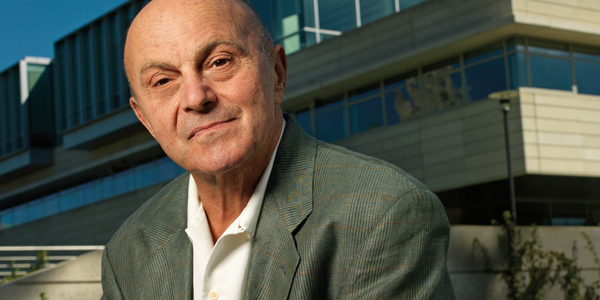
Many smart people have spent years trying to explain exactly why active management can’t keep up with the investment indexes. Leave it to Eugene Fama, the University of Chicago researcher and Nobel Prize winner, to make things painfully simple.
It’s nothing more than slicing a pie. If I get a bigger piece, everyone else is going to get a smaller piece, and that’s that. The problem for retirement investors is that eight times out of 10 they get the smaller slice and, worse, pay a huge fee to the pie slicer. Instead, they could have owned the whole market at a tiny fraction of the cost.
In Fama’s words, active management “never” works, and here’s why: “If active managers win, it has to be at the expense of other active managers. And when you add them all up, the returns of active managers have to be literally zero, before costs. Then after costs, it’s a big negative sign,” Fama told an audience in Chicago.
Eight times out of 10 because around 80% of active managers underperform the index every year. Which 80%? Nobody knows, but it’s often the case that a strategy that works one year will turn in an awful performance the next. The guy in charge of pie-slicing rotates out of the job, that’s all.
Such wild variability is nothing more than the natural result of return chasing. For instance, people couldn’t get enough gold in their portfolios as the recession hit. What has gold gotten for them since? A whole lot of pain, that’s what.
Think about it: An asset class has a good run for a few years. It becomes the talk of the town. Lots of investors buy in. The price goes up.
What happens next? Unsurprisingly, the whole asset class is overbought and suffers for months and years to come. The same thing can happen with stocks, with bonds, with emerging markets and so on. Gold is just the latest example.
So if you can’t get a competitive return from active management (and you really, really won’t after fees), where does return come from? Three places:
1. Long-term appreciation
Over the long run, investments do become more valuable. Since 1926, large-cap stocks have returned 9.8% annually, while government bonds have returned between 5% and 6%, according to Ibbotson Associates. Going back further, Wharton’s Jeremy Siegel found that from January 1802 through June 2013 stocks returned 6.6%, bonds 3.5%, bills 2.7% and gold 0.6%.
That’s real return, by the way, after inflation. To quote Siegel, in a presentation to the CFA Institute: “You do the compounding, it means your wealth in stocks has just about doubled in purchasing power every decade over the last two centuries.”
The bottom line: Stocks make money, bonds lower volatility and gold is a vehicle for speculators.
2. Reinvested interest and dividends
Why do stocks outperform the economy itself over time? It’s easy, Siegel explains: Reinvested dividends. In periods when stock prices level off, you end up buying more shares at lower prices by reinvesting dividend and interest income. This is especially powerful in a qualified retirement account, where you get to take a few decades off from worrying about capitals-gains taxes.
The bottom line: Stay in. Investment income grows your money in a retirement account.
3. Rebalancing
You hear a lot about how stocks are “overvalued” now. Of course, people said that prior to 2013, too, and the S&P 500 returned 29.6% that year.
If you are concerned about it, just rebalance. Programmatically taking gains off the table wherever they happen is the key to reducing risk. Rather than trying to guess the direction of the market for speculative reasons, rebalancing constantly reaps the rewards of low-cost, highly disciplined investment ownership.
The bottom line: Rebalancing and compounding is how retirement happens.
I know people don’t like the mathematical answer to the investing problem. It’s boring. They would prefer to believe that their advisor has found some “secret sauce” that will deliver a huge return at minimal risk.
The trouble is, it’s just not true.





